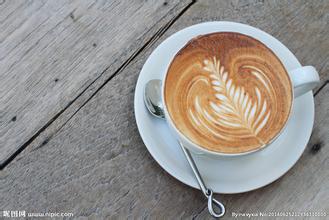Introduction to coffee growing area and growing environment in Port-au-Prince, Haiti
Most of the coffee produced in Haiti is grown purely naturally, not intentionally but as a result of shortages, because coffee farmers are too poor to afford fungicides, pesticides and fertilizers. This, in turn, makes coffee produced in Haiti the most natural and pollution-free. Haiti coffee is full of particles, rich in flavor, medium to low in acidity and mild in taste. In Japan, Haitian coffee is often blended with Jamaica Blue Mountain coffee, thus making Blue Mountain coffee more intense, known as the good companion of Blue Mountain coffee. In 1725, Haiti began to officially cultivate coffee in the north, and now produces and exports about 600,000 bags of coffee every year. Unfortunately, Haiti does not differentiate between farms in terms of quality, even at the final stage of selection. Coffee beans are mixed up. General Haiti coffee, mainly exported to European countries led by France, used to make blended coffee.
However, there is also a portion of coffee that is carefully grown in the mountains and then refined. Most of these coffees are known as SHG coffee (meaning coffee grown above 1600 meters above sea level), but also as Port-au-Prince coffee and blue Haiti coffee. These coffees are famous and expensive. Flavor Taste Characteristics:
Flavor rich, mild taste.
Haiti, located in the western part of Hispaniola Island in the middle of the sea, covers an area of about 27,800 square kilometers."Haiti" means "mountainous country" in indigenous language. This mountainous country is also the most troubled region on earth. It has always been in war and poverty. It is one of the most deprived countries in the world. But that doesn't stop this country from having nature's gifts. Haiti, which occupies two-thirds of the western island of Hispaniola, has coffee as its biggest export

Important Notice :
前街咖啡 FrontStreet Coffee has moved to new addredd:
FrontStreet Coffee Address: 315,Donghua East Road,GuangZhou
Tel:020 38364473
- Prev

Introduction to the export and production status of Australian coffee and its flavor characteristics
Very little coffee is grown in Australia, and Australian coffee is produced and exported very little because of the high labor costs here. Most of the coffee grown here is Robles specialty coffee, which tastes good and overflows with aroma, which is not inferior to Arabica beans. Although coffee without sugar, milk and other ingredients tastes purer, Australians don't seem to like it.
- Next

What is the quality of coffee produced by island countries? Dominica Santo Domingo coffee
The earliest coffee in Dominica was introduced from Martinique (the overseas province of France), dating back to the early 18th century. Dominica is an island country with a tropical climate. The temperature changes little throughout the year. Except for the lower temperature in the Central Cordillera Mountains, which can reach less than 0 ℃ in winter, the annual average temperature in other areas is between 25 and 30 ℃, which is affected by the mountain topography.
Related
- Does Rose Summer choose Blue, Green or Red? Detailed explanation of Rose Summer Coffee plots and Classification in Panamanian Jade Manor
- What is the difference between the origin, producing area, processing plant, cooperative and manor of coffee beans?
- How fine does the espresso powder fit? how to grind the espresso?
- Sca coffee roasting degree color card coffee roasting degree 8 roasting color values what do you mean?
- The practice of lattes: how to make lattes at home
- Introduction to Indonesian Fine Coffee beans-- Java Coffee producing area of Indonesian Arabica Coffee
- How much will the flavor of light and medium roasted rose summer be expressed? What baking level is rose summer suitable for?
- Introduction to the characteristics of washing, sun-drying or wet-planing coffee commonly used in Mantenin, Indonesia
- Price characteristics of Arabica Coffee Bean Starbucks introduction to Manning Coffee Bean Taste producing area Variety Manor
- What is the authentic Yega flavor? What are the flavor characteristics of the really excellent Yejasuffi coffee beans?

